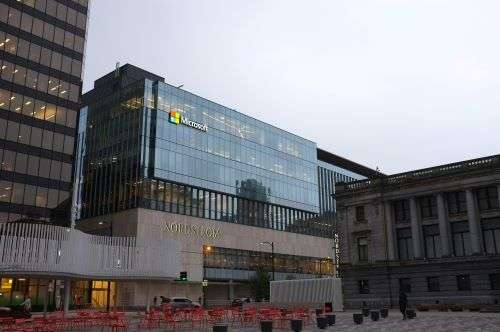Microsoft’s journey towards sustainability in the supply chain showcases the power of clear goals, robust data, and actionable metrics. By leveraging innovative solutions like the Coupa supply chain design tool and focusing on both forward and reverse logistics, Microsoft has been able to achieve significant reductions in carbon emissions while continuing to drive growth and efficiency in its operations.
Through a commitment to sustainability and innovative thinking, Microsoft is setting a model for sustainable logistics within the tech industry. By prioritizing eco-efficient practices and continuously optimizing its supply chain, Microsoft is not only reducing its environmental impact but also leading the way towards a more sustainable future for all.
Microsoft leverages Coupa’s supply chain design tool to achieve a significant reduction in carbon emissions while expanding its data center infrastructure, showcasing a commitment to sustainability alongside rapid growth.
Harnessing Technology for Eco-Efficiency
Microsoft’s ambitious goal to become carbon negative by 2030 and to address historical emissions by 2050 is being operationalized through innovative supply chain strategies. The tech giant’s expansion, including the opening of 100 new data centers in 2023, presents a unique challenge: balancing hypergrowth with the reduction of logistics emissions.
The complexity of moving non-standard IT hardware, which is integral to data center construction, typically results in high carbon emissions. However, Microsoft’s transportation and logistics team has been tasked with supporting the burgeoning demand for cloud services without compromising on sustainability or efficiency.
Innovative Solutions Driving Emission Reductions
At the forefront of Microsoft’s approach is the Coupa supply chain design tool, which has been instrumental in achieving a 60% reduction in carbon emissions from North American trucking operations. This success is attributed to the integration of emissions data from carrier partners, facilitated by the Global Logistics Emission (GLEC) Framework—an internationally recognized standard for calculating logistics emissions.
By analyzing various logistics scenarios, Microsoft has optimized the forward positioning of inventory, identified freight consolidation opportunities, and strategically located distribution centers. This modeling has enabled the company to make informed decisions that balance service reliability, cost, and carbon emissions.
In addition to addressing forward logistics, Microsoft is also focusing on reverse logistics by aiming to eliminate packaging waste through the use of reusable materials. This initiative is part of the broader Microsoft Cloud Supply Chain’s sustainable packaging goals, set for 2025, which encompass all cloud infrastructure products involved in the data center supply chain.
A Model for Sustainable Logistics
Microsoft’s journey towards sustainability in the supply chain is a testament to the power of clear goals, robust data, and actionable metrics. By democratizing access to this data, Microsoft empowers its users to understand the impact of their decisions and take meaningful steps towards a more sustainable future. The company’s efforts to become the most sustainable, innovative, and efficient hyperscaler logistics organization are well underway, with technology and strategic planning at the helm.





